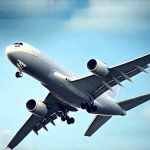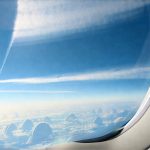Traveling long distances by air can be incredibly exciting, offering opportunities for adventure, business, or reconnecting with loved ones. However, it also introduces unique challenges to our bodies, and often overlooked amongst concerns about jet lag and deep vein thrombosis is bladder management. The restricted environment of a plane, combined with limited movement and changes in cabin pressure, can significantly impact urinary function and lead to discomfort for many travelers. Understanding how to proactively prepare your bladder before, during, and after a long flight can be the difference between an enjoyable journey and one filled with unnecessary worry and trips to cramped airplane restrooms.
This isn’t merely about avoiding frequent bathroom breaks; it’s about minimizing potential accidents, reducing anxiety related to bladder control, and ensuring overall comfort during extended periods of sitting. Many factors contribute to increased urinary frequency on flights – from the consumption of beverages (even water!) to atmospheric pressure changes that can cause fluid shifts within the body. A little forethought and preparation can go a long way in mitigating these effects, allowing you to focus on enjoying your travel experience rather than constantly monitoring your bladder.
Pre-Flight Hydration & Dietary Considerations
Proper hydration is always important, but its role becomes especially critical when preparing for a long flight. The common advice to limit fluids before flying is often misguided; drastically reducing water intake can actually concentrate urine, making it irritating to the bladder and potentially worsening any existing discomfort. Instead, focus on consistent and balanced hydration in the days leading up to your trip, and continue drinking reasonable amounts of water during the flight itself. Aim for a steady intake rather than large gulps.
What you eat before and during travel also plays a significant role. Certain foods and drinks can irritate the bladder or increase urine production. It’s best to avoid or limit:
– Caffeine (coffee, tea, energy drinks) – known diuretic.
– Alcohol – another powerful diuretic that can also impair bladder control.
– Carbonated beverages – can cause bloating and increased pressure on the bladder.
– Spicy foods – may irritate the bladder lining in some individuals.
– Artificial sweeteners – found in many diet drinks and sugar-free products, they can sometimes trigger urinary symptoms.
Focus instead on hydrating foods like watermelon and cucumbers, and consider incorporating calming teas (herbal, caffeine-free) into your routine a few days before departure. A well-hydrated body is ultimately better equipped to handle the stresses of air travel. Consider tracking your fluid intake for a couple of days prior to flying to understand your baseline hydration habits.
Understanding Airplane Physiology & Bladder Function
The airplane environment itself significantly impacts bladder function. Cabin pressure changes during ascent and descent can cause fluid shifts, leading to increased urine production as the body tries to regulate its internal balance. This is why many people feel the urge to urinate more frequently during takeoff and landing. Furthermore, prolonged sitting restricts blood flow, potentially affecting bladder control mechanisms.
The feeling of being confined and the anxiety associated with flying can also contribute to urinary urgency. Stress often exacerbates existing bladder sensitivities. It’s important to remember that a full bladder isn’t necessarily uncomfortable until it reaches a certain capacity, but the fear of needing to use the restroom on a plane can create a self-fulfilling prophecy, leading to increased anxiety and perceived urgency. Recognizing these physiological effects is the first step towards proactive management. Knowing what’s happening in your body will help you prepare mentally and physically for the challenges ahead.
Strategic Bathroom Visits & Timing
Planning strategic bathroom visits is essential. Before boarding, make sure to empty your bladder completely. This provides a clean slate and minimizes initial urgency during takeoff. During the flight:
1. Utilize lavatory breaks proactively – don’t wait until you absolutely have to go.
2. Aim to use the restroom shortly after periods of turbulence or significant altitude changes, as these can trigger increased urine production.
3. Consider setting a timer on your phone (e.g., every 90-120 minutes) as a gentle reminder to visit the lavatory, even if you don’t feel an urgent need.
This isn’t about creating unnecessary trips; it’s about preventing overwhelming urgency and potential accidents. It’s also important to be mindful of others on board – avoid rushing into the restroom when someone else is clearly waiting. Patience and consideration are key. Remember that airline staff will often advise on lavatory availability, so don’t hesitate to ask if you have concerns.
Clothing Choices & Comfort
What you wear can surprisingly impact bladder comfort. Avoid tight-fitting clothing, especially around the abdomen and groin area. Restrictive garments can put pressure on the bladder and exacerbate urinary symptoms. Opt for loose, comfortable clothing that allows for easy movement and breathability. Layers are always a good idea, as cabin temperatures can fluctuate significantly.
Choose underwear made from breathable fabrics like cotton to minimize moisture buildup and prevent irritation. Consider wearing dark-colored bottoms in case of any minor accidents – it’s simply more discreet. Comfortable clothing reduces anxiety and promotes relaxation, which indirectly benefits bladder control. Think about what makes you feel most at ease during long periods of sitting, and prioritize that when packing for your trip.
Mental Preparation & Relaxation Techniques
Anxiety surrounding potential bathroom issues can significantly worsen urinary symptoms. Practicing relaxation techniques before and during the flight can help manage stress levels and promote a sense of calm. Deep breathing exercises are particularly effective – simply focusing on slow, deliberate breaths can reduce anxiety and relax bladder muscles. Mindfulness meditation or listening to calming music can also be beneficial.
Visualize yourself having a comfortable and uneventful flight. Imagine being able to relax and enjoy the journey without worrying about bathroom breaks. This positive mental imagery can help reframe your thinking and reduce overall anxiety. If you experience significant anxiety related to urinary control, consider discussing it with a healthcare professional before your trip – they may be able to offer additional strategies or recommend coping mechanisms. Remember that a calm mind is often the best defense against bladder-related discomfort.





















